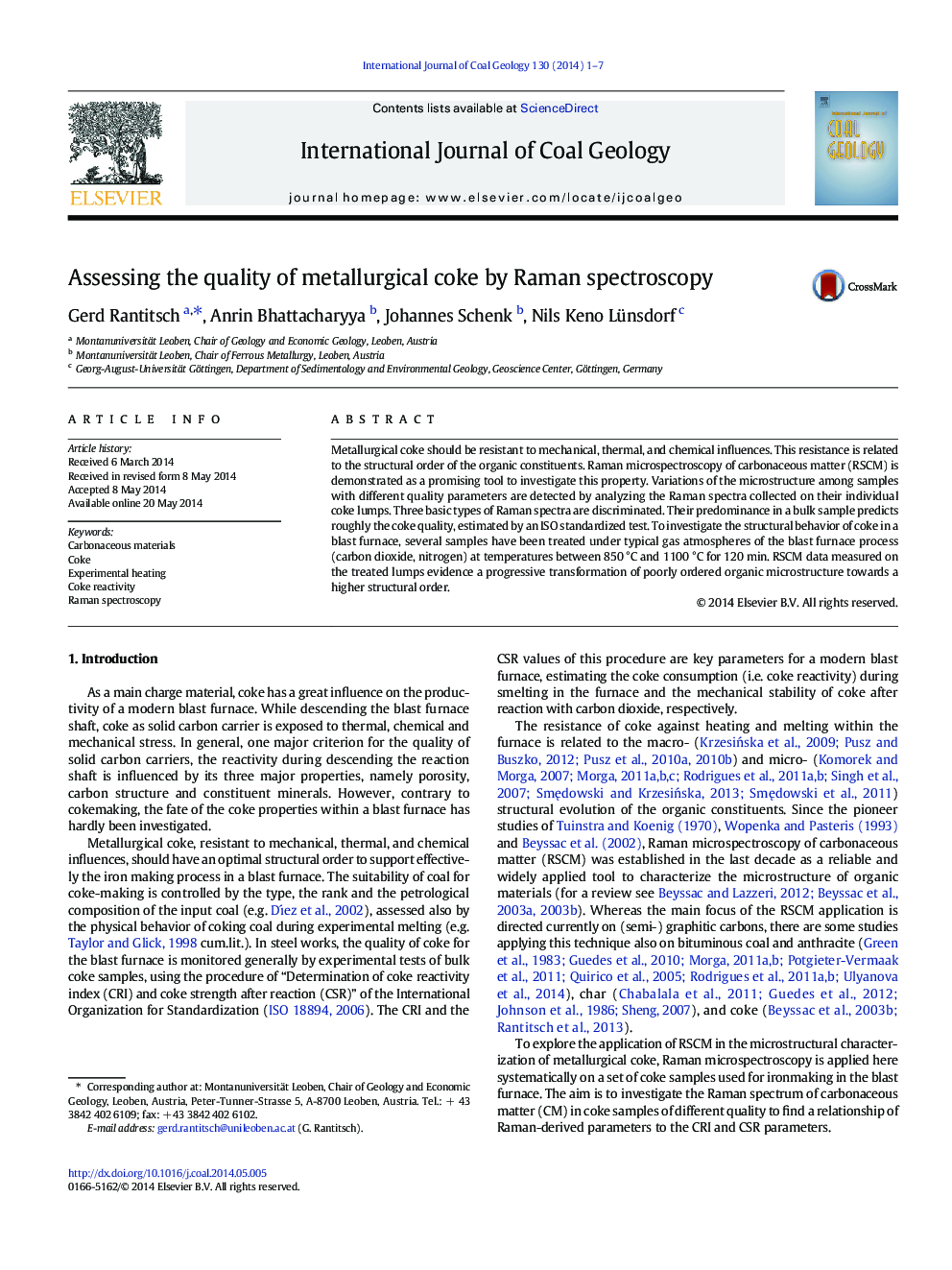| Article ID | Journal | Published Year | Pages | File Type |
|---|---|---|---|---|
| 1753077 | International Journal of Coal Geology | 2014 | 7 Pages |
•Three basic types of Raman spectra are discriminated in coke.•Raman microspectroscopy predicts roughly the coke quality.•Poorly ordered coke microstructure is transformed towards a higher order.
Metallurgical coke should be resistant to mechanical, thermal, and chemical influences. This resistance is related to the structural order of the organic constituents. Raman microspectroscopy of carbonaceous matter (RSCM) is demonstrated as a promising tool to investigate this property. Variations of the microstructure among samples with different quality parameters are detected by analyzing the Raman spectra collected on their individual coke lumps. Three basic types of Raman spectra are discriminated. Their predominance in a bulk sample predicts roughly the coke quality, estimated by an ISO standardized test. To investigate the structural behavior of coke in a blast furnace, several samples have been treated under typical gas atmospheres of the blast furnace process (carbon dioxide, nitrogen) at temperatures between 850 °C and 1100 °C for 120 min. RSCM data measured on the treated lumps evidence a progressive transformation of poorly ordered organic microstructure towards a higher structural order.
